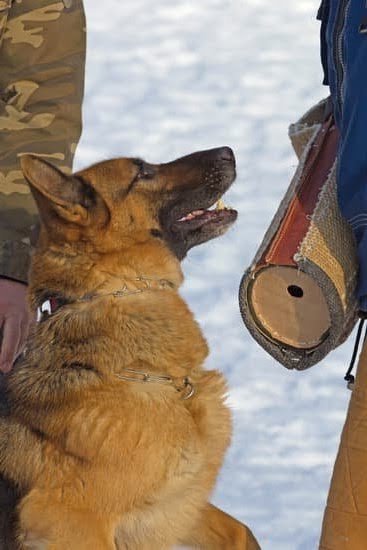What is the most difficult dog to train? Training a dog can be an incredibly fulfilling experience, but it also comes with its own set of challenges, especially when dealing with certain breeds. Understanding the complexity of dog training and the factors that contribute to a dog’s trainability can help in overcoming these challenges.
Different dog breeds have their own unique temperaments, personalities, and traits that can make them more or less receptive to training. Factors such as intelligence, energy levels, independence, and motivation play a crucial role in determining how easy or difficult a breed may be to train.
In this article, we will explore the temperament of different dog breeds, the factors that contribute to a dog’s trainability, and which breeds are considered more challenging to train. Additionally, we will look at case studies and examples of difficult training experiences, as well as provide tips and techniques for successfully training a challenging breed.
Patience and consistency are key elements in successful dog training, and we will discuss their importance in building a strong bond with your canine companion.
Understanding the Temperament of Different Dog Breeds
Temperament Variations
Dogs, like humans, have their personalities and temperaments. Each breed has been developed for various purposes, from hunting to herding and guarding. These purposes contribute to the different traits that can be found in each breed. For example, herding dogs such as Border Collies are known for their high energy levels and need for mental stimulation, while guard dog breeds like German Shepherds tend to be more protective and assertive.
Influence of Genetics
The genetic makeup of a dog also plays a significant role in its temperament and trainability. Some breeds are more independent or strong-willed due to their genetic predisposition. This can make it more challenging to train them compared to breeds that have been specifically bred to be more obedient or eager to please.
Trainability Traits by Breed
Certain breeds are known for being easier to train due to their characteristics such as intelligence, willingness to please, and high energy levels. On the other hand, some breeds may exhibit stubbornness or independence, making them more difficult to teach commands or obedience. Understanding the natural tendencies and instincts of various breeds is crucial when considering training methods and approaches.
As pet owners consider enrolling their dogs in obedience classes or in-home training programs, understanding the unique temperamental traits of different dog breeds is essential in setting realistic expectations and developing effective training strategies.
Factors That Contribute to a Dog’s Trainability
When it comes to training a dog, there are several factors that contribute to the overall trainability of a particular breed. One of the most significant factors is the breed’s inherent temperament and intelligence. Some breeds are naturally more eager to please their owners and are quick learners, making them relatively easier to train. On the other hand, some breeds may be more independent or stubborn, requiring a different approach and more patience from their owners.
Another important factor in a dog’s trainability is its individual personality and past experiences. Just like humans, dogs can have unique personalities that affect how they respond to training. Additionally, a dog’s past experiences, especially during its formative months, can play a crucial role in shaping its behavior and receptiveness to training.
Furthermore, the level of socialization and exposure to various environments can impact a dog’s trainability. Dogs that have been well-socialized from an early age and exposed to different people, animals, and situations tend to be more adaptable and easier to train compared to those with limited exposure. These factors collectively contribute to how trainable a dog is perceived to be.
| Factors | Impact on Trainability |
|---|---|
| Breed temperament and intelligence | Determines innate ability and eagerness to learn |
| Individual personality and past experiences | Influences behavior and responsiveness |
| Socialization and exposure | Affects adaptability and willingness to learn |
Breeds That Are Considered More Challenging to Train
Training a dog can be both a rewarding and challenging experience, as every breed has its own unique temperament and characteristics that affect their trainability. Some breeds are considered to be more challenging to train than others due to various factors such as their intelligence, independence, and energy levels. It’s important for potential dog owners to understand the differences between breeds before choosing a pet, as some dogs may require more patience, consistency, and training techniques.
Here are some breeds that are commonly considered more challenging to train:
- Afghan Hound: Known for their independent nature and intelligence, Afghan Hounds may require patience and consistent training to respond positively.
- Basenji: These energetic and intelligent dogs have a strong prey drive, making it crucial for owners to focus on positive reinforcement techniques during training.
- Chow Chow: With their strong-willed and aloof nature, Chow Chows require firm but gentle guidance from their owners during training sessions.
When it comes to training these challenging breeds, it’s important for owners to understand the specific needs of their dogs. Consistent training techniques such as positive reinforcement, patience, and socialization can help in managing the challenges associated with these breeds. It’s also crucial to seek professional guidance or enroll in obedience classes to ensure that the training process is effective and beneficial for both the dog and the owner.
Case Studies and Examples of Difficult Training Experiences
Training a dog can be a rewarding experience, but it can also come with its challenges, especially when dealing with certain breeds. While some dogs seem to quickly grasp commands and behaviors, others may require more patience and techniques to train effectively. Here are some case studies and examples of difficult training experiences with certain dog breeds:
- German Shepherd: Known for their intelligence and loyalty, German Shepherds can also be strong-willed and independent. Training these dogs may require a firm and consistent approach, as they can be prone to testing boundaries.
- Siberian Husky: Huskies are energetic and playful, but they can also be stubborn and easily distracted. Training them can be a challenge due to their high energy levels and the need for mental stimulation.
- Bulldog: Bulldogs are known for their relaxed and easy-going demeanor, which can sometimes make them resistant to training. Their laid-back nature may lead to a lack of motivation during training sessions.
These case studies highlight the fact that certain breeds have specific temperaments and characteristics that can make training more difficult. Understanding these traits is essential in developing effective training strategies for each individual dog.
In addition to breed-specific challenges, external factors such as the dog’s history, environment, and previous experiences can also play a role in their trainability. For example, rescue dogs or those with traumatic pasts may require additional patience and specialized training methods to help them overcome their fears and behavioral issues.
Tips and Techniques for Training a Challenging Dog Breed
Training a challenging dog breed can be a frustrating and rewarding experience at the same time. While some breeds may require more patience and consistency in their training, it is important to approach the process with the right techniques and mindset. Here are some tips and techniques for training a challenging dog breed.
Understanding Breed-Specific Traits
One of the first steps in effectively training a challenging dog breed is to understand the specific traits and characteristics of that breed. Different breeds have different temperaments, energy levels, and instincts, which can all impact their trainability.
For example, herding breeds may have a strong instinct to chase and control movements, while hound breeds may be more independent and easily distracted by scents. By understanding these traits, you can tailor your training approach to better suit your dog’s needs.
Positive Reinforcement
Using positive reinforcement techniques such as treats, praise, and rewards can be highly effective in training challenging dog breeds. Rather than focusing on punishment or harsh corrections, positive reinforcement encourages good behavior by rewarding it. This not only creates a more enjoyable experience for the dog but also strengthens the bond between you and your pet.
Consistency and Patience
Consistency is key when training a challenging dog breed. Establishing clear rules, boundaries, and expectations from the beginning will help your dog understand what is expected of them. It’s important to remain patient throughout the training process, as progress may be slow at times. Consistent training methods combined with patience can lead to successful results in the long run. Remember that each dog is unique, so what works for one may not work for another.
By taking the time to understand your dog’s breed-specific traits, using positive reinforcement techniques, and maintaining consistency and patience in your approach, you can improve the trainability of even the most challenging dog breeds. Building a strong foundation through effective training will not only result in a well-behaved pet but also strengthen the bond between you and your furry companion.
The Importance of Patience and Consistency in Dog Training
Training a challenging dog breed requires a significant amount of patience and consistency from the owner or trainer. These breeds often have strong-willed personalities, high energy levels, or independent natures that can make them resistant to traditional training methods. It’s crucial for dog owners to understand that achieving desired behavior in these dogs will not happen overnight and will require consistent effort and perseverance.
Patience is key when dealing with a difficult-to-train dog. It’s important for owners to remain calm and composed during training sessions, as frustration or anger can negatively impact the process. Dogs are highly perceptive animals and can pick up on their owner’s emotions, so maintaining a positive and patient attitude is essential in fostering a trusting relationship between the dog and its trainer.
Consistency in training methods is equally important when working with a challenging breed. Repetition of commands and exercises, along with maintaining a clear set of rules and boundaries, will help the dog understand what is expected of them. Inconsistency can lead to confusion for the dog, making it harder for them to learn and retain new behaviors. By establishing a routine and sticking to it, owners can effectively communicate their expectations to their canine companion.
| Patience | Consistency |
|---|---|
| Remaining calm during training sessions | Repetition of commands and exercises |
| Maintaining a positive attitude | Establishing clear rules and boundaries |
| Fostering trust between dog and trainer | Creating a consistent routine |
Conclusion
In conclusion, while it is true that some dog breeds may be more challenging to train than others, the rewards of successfully training a difficult dog are immeasurable. The bond that is created between a dog and its owner through the training process is a special and unique connection.
It requires patience, consistency, and understanding of the dog’s temperament, but the end result is a well-behaved companion that brings joy and fulfillment to both the pet owner and the dog.
One of the most rewarding aspects of successfully training a difficult dog is witnessing their transformation. Seeing a once unruly or stubborn dog become obedient and responsive to commands is incredibly satisfying. This achievement not only reflects positively on the dedication and effort put into training, but also strengthens the bond between the owner and their pet. The sense of accomplishment in overcoming challenges during the training process ultimately leads to a deeper connection with the dog.
Furthermore, successfully training a difficult dog also has practical benefits for both the owner and the pet. A well-trained dog is safer in various situations, such as around other animals or in public places.
Additionally, it allows for greater freedom for both the pet and its owner, as they can engage in activities together without worry or stress. Ultimately, despite the challenges involved, investing time and effort into training a difficult dog results in a stronger relationship built on trust, respect, and understanding.
Frequently Asked Questions
Which Dog Is the Hardest to Maintain?
The hardest dog breed to maintain would likely be the Afghan Hound due to its long, flowing coat that requires daily grooming and regular bathing. Their coat easily mats and tangles, making grooming a time-consuming and labor-intensive task. Additionally, their independent nature can make training and obedience challenging.
Which Dogs Are Hardest to Rehome?
Breeds that are typically hardest to rehome are often those with specific needs or strong personalities, such as Pit Bulls, Rottweilers, or Staffordshire Bull Terriers. These breeds may face prejudice or misconceptions from potential adopters, making it harder for them to find new homes.
It often requires dedicated efforts from shelters and rescue organizations to find suitable placements for these dogs.
Is There a Dog That Cant Be Trained?
While all dogs have the capacity to learn and adapt to training in some form, there are individual dogs that may present significant challenges due to their unique temperaments or past experiences. Dogs with severe behavioral issues stemming from abuse or trauma may require specialized, expert intervention to help them overcome their obstacles.
Patience, consistency, and understanding are crucial when working with such cases.

Welcome to the blog! I am a professional dog trainer and have been working with dogs for many years. In this blog, I will be discussing various topics related to dog training, including tips, tricks, and advice. I hope you find this information helpful and informative. Thanks for reading!





